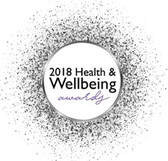|
All yoga is good... to a point.
Take the analogy of cooking. McDonalds is food. It has good energy, has great texture and flavour (subjective - but many would agree and $millions has been spent on developing it in labs), it fills you up when you are hungry, and has protein and carbs to keep you going. And you don't even have to know how to cook! Home cooking is better food. It has good energy, fills you when you are hungry, tastes delicious, but you take more responsibility for what you put in it. You are more discerning about your intake of the 'other stuff' (fat, salt, sugar, low quality ingredients). It is more nutritious and will serve your longer term health 1,000% more. It has better balance that includes fresh vegetables and micronutrients. It avoids the stuff your allergic too, and gives you more of what you actually need. It adapts each week and each month depending on the season or the stage of health or stage of life. But you have to learn how to do it. When we first start yoga, we work on the assumption that what we desire is what we should have. We find the Youtube videos we enjoy, or the class that makes use feel great. This is almost everyone's starting point. We simply wouldn't carry on if it didn't feel good. It is a great place to start. The larger class can be fun, exhilarating and challenging - enjoy the great vibe and energy of the room. The cons are that the practice might not be quite right for you, and over time, this can be a red-herring in our yoga. After a while, especially as we age and our bodies and minds need a more thoughtful and careful approach, we learn to listen to how we are reacting to our practice. How is it serving us? Are our aches and pains improving? Is our sleep better? Is our mood improving or are we getting frustrated? Are we becoming more patient and kind with ourselves and those around us? Some of these markers are subtle, but incredibly important. If any of these are off, then an adjustment to the way we are practicing is almost certainly necessary. This is where your relationship with an experienced teacher can help guide you to a more nuanced and balanced practice. Enjoy your practice and reflect on how well it is serving you so that your time spent in yoga can be even more fruitful.
0 Comments
Celebrate our teachers
We have some wonderful teachers at YogaSpace including some of the most experienced in Bristol. Marian has been running her Thursday classes since 1998, which is the same year that I started practicing yoga. Something must be going right for us to get the award for BEST YOGA CENTRE IN BRISTOL, 2024. Experience really counts in a yoga teacher. Especially if you find yourself in an older body, or have an old injury that needs extra care and attention. Almost all our teachers are 50+ and have been at this for at least a decade so know what we are doing and can ensure it is ideally tailored to those participating. 'Yoga with Adriene' is great if you are also in your 30s, young and fit etc., otherwise you might find yourself pursuing a practice suitable for someone younger. She says and does a lot of great stuff, but... having an appreciation for bodies and minds that have some wear and tear, a collection of injuries or issues, are flat-out in their busy lives, or are perhaps post-menopausal, really does matter when it comes to teaching a movement-based practice. Alongside our brilliant skill and experience, it is also why we keep our classes pretty small. One studio just up the road from us squeezes in 35 students in each class. 35!! I hope no-one needs an adaptation or any bespoke attention as it simply isn't possible to see what everyone is doing in a group that size. Of course almost all practice is better than none. YouTube videos for folks in their 30s is fun, squeezing into a hot room with lots of others is an exhilarating buzz. Or if you want tried and tested experience for grounded, well-balanced yoga that will leave you feeling great and support you in a tailored way, then you are in good hands with us. Busy at the moment? There may be extra social gatherings and more demands on our time and things to get done. There are sights, sounds and smells that are stimulating and seasonal and that we would miss if we didn't have them (remember that the next time Jingle Bells is coming at you). Much of this can be enjoyable, some perhaps stressful, but life can certainly seem extra busy and we may feel like we are being swept along. Taking time for more grounding yoga practices and creating pockets of space for moments of stillness can be a huge support to help us stay present enough to enjoy what the time of year has to offer. I'm particularly noting this year's season as I've just lost a friend to a long illness. Sadly this was her last Autumn. As heart-breaking as this is for those who knew and loved her, it reminds us how precious these moments are. This experience of life, as it is right now, is actually it. We don't know what will come next. And while this doesn't mean we shouldn't plan for, and usher in a better future, we should also recognise that this moment right now is our life to experience fully. Yoga helps us settle in to our bodies more fully and comfortably. We realign ourselves back to our centre, and re-find our natural posture and balance. We settle agitation and stress in the body, ease our stiffnesses and aches, reduce turbulence in our minds. Whole body movements and breaths practiced regularly bring us into a steadier and more stable version of ourselves able to more fully notice and embrace the joy of the season. With the colder evenings now set in for the winter, perhaps heading out to the studio, or getting on to your mat at home feels harder? Some of you have (or want) a regular home practice, some of you only practice in a group class, and some of you do both. In an ideal world we would do both, but home yoga and group yoga are both great in their own right. Our initial challenge is doing something! The main aim is to regularly and consistently move, breathe well, and become more embodied and subtly aware of yourself and life. Our bodies love to move, and when given time and space to practice, respond in incredible ways. The next challenge is doing what is right for you. What will bring you what you need in the most effective way. Group yoga is very different from home yoga, and both have brilliant benefits, advantages and disadvantages. And they are a wonderful complement to each other - in an ideal world, we would do both. GROUP YOGA More challenging. Typically more challenging, not necessarily physically, taking you into new territory in a guided way to discover aspects of your body, breath and awareness that you might not delve in to by yourself. It usually isn't as frequent as home yoga, so that extra challenge has time to integrate over the days until your next class. Teacher guidance. It offers more guidance from a teacher. Habits that you wouldn't notice on your own can be highlighted and explored. A teacher will be able to provide experience in how to overcome obstacles, issues and offer new insights physically and beyond. The process of finding an optimum practice that works for you and your unique body and situation can be achieved more quickly and avoid more of the pitfalls along the way. Motivating. It can be great to bookmark that time in your calendar, and help keep you motivated and accountable so that your practice actually happens. This requires its own commitment to showing up. Prebook your classes or term so that it is given priority in your life. And the friendly faces each week help keep it fun and enjoyable. HOME YOGA Personal to you. Home practice is typically more frequent, often shorter, more gentle and more personal and intimate with yourself. Once you know what your doing, there are less external reference points to guide you. Its just you with your body, breath and mind. The practice can gradually become more internal, and perhaps more subtle. Shorter time more often. If you are taking an hour long, class-like practice every day, chances are this is more than you need to do, so only do that if you know you are being careful, and have lots of spare time or have built this up over a while. It is incredible what a shorter practice, taken daily, with repetition and a well-focused mind-set can add to your life. Start small. I've been guiding home practice in 1:1 sessions for over 15 years and initially, I would suggest that 10-20 minutes is plenty if your goal is long-term. Spend a month doing a shorter practice, getting to your mat daily and consistently, and then only once the habit is established and solid, then consider adding in a little more, step-by-step, until it feels optimal, enjoyable, and fits in to your life. It doesn't have to 'look' impressive for it to be brilliantly effective. 30-day challenge. If your interested in jump-starting your own home yoga practice, your invited to join my free 30-day challenge to help you on your way. Go to the Free Yoga Resources page and start from there. 6-months from now you'll be so glad you did! Our yoga practice is often forward looking - we practice to gain something. Perhaps we are seeking more flexibility, a less achy back, an unscrambled mind, a stronger and calmer end to our week. The idea of seeking something from yoga is universal, especially when you are getting started. We all take up the practice for a reason, and yoga in its brilliance, is often a good solution. It does all of those things, and much more. However we don't have to always seek something from our practice and their is a curious paradox here. Not seeking or expecting a reward from what we do is a different stance from how we approach most of the rest of our lives. Instead, we can move and breath for the joy of it, for the habit of it, we let go of the expectations and hopes, and simply see what arises. This step-change in our practice can be a revelation. It can provide a gentleness towards ourselves. We might discover how to listen inwards more fully. And perhaps opening towards what is there now, not what we are trying to create or get. And it allows us to discover space and be more receptive to what arises. Instead of pushing or demanding something of a posture, or of our breath or focus, invite a gentler approach. Bring an openness to a movement or to the breath, back away from pushing, struggling or trying too hard. And within that find receptivity. Pushing against anything will meet resistance. Sometimes it is appropriate to address this resistance. But it is also wonderful to let go of the pushing. Allow a pose to unfold for us instead of 'creating' it with effort. Allow the body to be more receptive to a stretch because it feels safer when not being pushed. Allow the nervous system to calm down. There is research demonstrating that if you take a stretch at only 30% of the maximum, so hardly anything really, that it is far more effective at gaining mobility than taking the stretch at 70% or higher. Receptivity and repetition do the job better than pushing, and allow us a spacious and relaxed body and mind along the way. Next time you take to your mat, instead of expecting or pushing, try giving thanks for what you already have, what is already there, and open gently into what arises without expecting anything more. It offers a beautiful pause in life which I would highly recommend. Getting to your yoga mat doesn't get easier when it rains, but the brilliant rewards are always worth it, so what will help? The weather, the dark evenings, the wind, and the cosy sofa all work to keep us home. Getting to your mat can feel hard. But it doesn't need to if you simply plan ahead and commit to it in advance. Thinking about whether to do your practice or not is a slippery slope. Our thoughts are tricky, easily derailed, and unreliable for doing what is best for us. Not getting to your mat can be tempting when the weather is bad. And without the commitment in advance, it won't get any easier. Take your decision to practice once, in advance, when your feeling pro-active. It is soooo much easier than deciding each day or week whether or not to turn up. I love getting to the end of a term of classes and inviting people to see if the physical work or breathwork feels different than when they started a few weeks previously. We have been getting into the deeper work that familiarity in your practice allows. Perhaps the half pigeon pose isn't as intense after doing it for a few weeks, not because you aren't doing it as fully, but because the body has changed and is less restricted in the hips than it was before.
Yoga really does work. Brilliant! I had a lovely email from someone from class yesterday and I would love to share it with you (it's anonymous of course, but thanks so much for sending me your story of how yoga is helping you!!). "I walked into the office this morning and my boss took a deep breath to speak. (Clara note: her boss is VERY difficult to work for) Instantly a little voice in my head said “You’ve got this. You did yoga last night!” Isn’t that incredible! I stood tall and answered politely! So yoga is working for me! Looking forward to our next session!" Yoga practice helps our bodies change for the better, and helps our nervous system to become more resilient to stress and strain. We become more open and available to meeting antagonism with friendliness, holding our ground with amity rather than anxiety. Our minds become more open, relaxed, spacious, and we can let go of negative patterns and embrace a more positive way of being in the world. All that from a weekly class. I love it! I was away for a wonderful weekend of yoga last week and feel replenished in my personal practice. I rediscovered more spaciousness, forgotten techniques, and re-ignited some subtle changes that are translating into a more transformative daily practice for me. Some aspects of practice come to the forefront with a teacher observing how you are in your yoga and guiding you from what they notice. We all slip into being on auto-pilot sometimes. We assume we know what we are doing (and we might, more or less), we assume we know how to 'do' the pose or the breath, and forget to let the body and breath lead the way, and be listened to, and responded to in new ways each time we arrive in our practice. As is so common in the rest of our life, we lead from our heads, and 'will' ourselves into the poses and techniques - which is great, but not as fruitful. Once you are established in a regular practice, this is one of the pitfalls that can arise. Practicing at home is wonderful, I'm a huge advocate of it - but face to face contact with a teacher to help observe, prompt and redirect you can be so helpful in rekindling how transformative our practice can be. Trying new ways of doing familiar things can be completely refreshing. Imagine feeling more confident in yourself, more peaceful at work and at home, more stable in body and mind. Easeful in your movements, in your attitude, and in your body and breath. Quick fixes are no longer required because you feel good more often than not and your sleep and health improves.
Yoga helps you with all of this. It requires a little input from you, a commitment to regular practice, but it offers so much more than it requires. There is never a great time to squeeze it in. Few of us find time hanging around, empty time where we go "right then, I've got time for some yoga now." Time isn't found to do yoga, you have to make time, by putting it aside in advance, committing to getting to your mat, scheduling it in to your diary. Literally leave your mat out so you'd have to fall over it or step past it to miss your practice. Book in advance and you'll get to your practice and start to cultivate all of the wonderful benefits that it delivers, and much more besides. What yoga has offered me has changed over the years with the demands of health and lifestyle. Yoga supported me with stress relief during my single life of career and partying in my 20s, to being a busy mum with teenage boys and family and work demands, and everything in between. My body has changed, my energy levels have changed, the time I've had available for yoga has changed, but I've never given it up, as it gives back so much more than I give to it. Amongst all this change in my life, my practice has remained consistent. The postures and breathwork don't change that much, a posture or technique here and there to address specific needs. There are things I'll keep doing as long as I am able, because they work so well for me, keeping me as healthy as possible, stable, with a clearer, more grounded perspective on what's important in life. What changes the most is how I do my practice. I might take the postures slower - increasing the physical intensity with an extended breath, making more demands on my body by lingering in the hard bits. Or I might use a mantra to accompany the movements, and ease back physically to enable spaciousness to arise in the face of feeling overwhelmed. Occassionally I'll just do lying poses, some breathwork and savasana if I'm feeling poorly. My framework was set by my teacher, Paul Harvey, and remains pretty stable. I have a set practice that works, and offers a reference point for how I am. It took consistency and an experienced teacher to get me to that point, and my job is to keep showing up on my mat. The rewards of consistent practice are lifelong, and riding the rollercoaster of life becomes a lot more fun along the way. Here's to another year with yoga by my side Luckily the penny dropped right away with me that yoga was something I needed to prioritise. That this is what I needed to do to improve pretty much every aspect of my life. I immediately felt less stressed and tired. Literally by the end of my first 20 minute practice I felt like a weight had lifted from my body, from my mind and from my sense of wellbeing. I knew I needed to keep doing this regularly to top up these effects and I've never looked back. What else do you put in your calendar that helps you feel better, find more space and freedom in body and mind, and helps everyone around you? I practise yoga every morning before I come down and breakfast with the kids for exactly this reason. It enables me to bring more vitality and a better mood to the table, which helps my day, their day, and get us off to a good start. They are teens so they need all the good vibes they can get or it can be a rocky ride. Finding the right practise, the right level of effort and ease, the right intensity and relaxation is hard to find these days. There is a lot of power yoga that is fast and vigorous, heated to intensify the experience, skipping through poses with barely a chance to catch your breath.
But there is also what we offer at YogaSpace ... there is a quietness to what we teach, it is challenging but gentle, understated but highly effective and brilliantly accessible. It can take getting used to but brings all the benefits that yoga has to offer. Add slow breath and focus to any posture and you'll discover a new way to practise. It can take time to get it to feel familiar, to get comfortable and to learn the skills of effective practise, but that is why it is called practise. The penny might not drop right away, it might not feel like the workout you thought you needed, but you'll soon find your way with it. Along with our group classes that we offer, there are some in-depth workshops coming up that will help kick start and develop your practise in a way that only small group guidance can. If you do yoga regularly, a year from now you'll be stronger, healthier, have improved mobility, breath capacity and regulation, and be accustomed to feeling good ...
Our bodies, our health, our mental vitality are in a 'use it or lose it' trajectory. If we don't get round to putting our bodies and breath through their paces, and stretch our mental wellbeing and focusing ability, the decline will be subtle until things start to grumble. Don't leave it that long. I hear all the time, as people return to practice, they don't know why they stopped and had forgotten how good it feels. The body loves (needs!) to move, to breath well, to notice and address postural habits and mental patterns. It is amazing how it all falls back into place if we make it to the mat regularly. If not now ... when? My teenage kids can be a challenge with turbulent and unpredictable moods and impulsive behaviours. It's certainly not easy being a teenager. As they are a huge part of my life they take as much energy, patience and goodwill as I can muster. Keeping calm and bringing positive energy to meet their teenage hormones is sometimes the best thing I can do for them, and I can't always even do that! It helps hugely to practice yoga each morning before I head downstairs to greet them. If I manage to arrive with a positive mindset, it effects how my day goes, my perception of everything I encounter, and if I can bring humour and fun to whatever they bring to the breakfast table, it instantly raises their mood too. And if you know any teenagers, moods are a big deal. Our yoga practice is not only for us but also those around us. If our outlook can be improved, then it has a ripple effect that goes far beyond ourselves. We experience each moment of our day through the lens of our minds. We colour everything we encounter with our moods, our emotions and mindset. And if the lens of our mind is cloudy, murky or moody, then that will be how we interpret most things.
And then we do our yoga... Moving and breathing in helpful ways actually shifts things. It changes our state to become lighter, more positive, more vibrant and able to meet challenges with more positive energy, which is contagious.. Weekly yoga, daily yoga even for 10 minutes - it all counts. And it accumulates over time. We build up a positive 'credit' of health and positive energy. We can draw on this when times get tough, and we can invest into it and build up our credit when times are good. Keep showing up to your practice and the ripple effects will positively effect everyone around you. Even teengers. I'm still enjoying the inspiring afterglow of last Sunday's day of yoga, reflection and intention setting. A lovely group of people gathered for the New Year Retreat Day at the Bishopston studio to take space for themselves and to delve a little more into simple but gorgeous yoga practices and refresh their yoga life skills ready for 2024.
The practices and chats on Sunday reminded us that yoga is as much about moving and breathing, as it is about the skills involved in living a more joyful life. We don't often have time in a group class for explicitly engaging with the philosophical framework of yoga, but it is a real, rich, living philosophy which once explained is hugely practical in every day life. The yoga framework includes aspects such as: ~ being kind and generous to yourself and others ~ ~ reflecting inwardly from time to time ~ ~ noticing how things effect you and adjust the stuff that isn't helpful ~ ~ being present more often, it is where joy can be found ~ ~ keeping things simple, overcomplication rarely helps ~ We do this often on the mat in our yoga class. We are invited to turn our attention inwards to our breath and body sensations, rather than outside of ourselves. To be more gentle with ourselves than we might normally. To pause and observe effects of a pose or technique. To be present and to simplify what we are doing with our attention. These are all aspects that we cultivate on the mat so that they are more available to us in daily life too. Insights are witnessed in our practice that allow us to be easier on ourselves and become wiser in our lives. And the net result will be that we become happier and healthier, nicer to be around, better to ourselves and others, and a whole lot more effective in whatever we are hoping to achieve with our day. (Win, Win, Win!) Beyond the day-retreat being a wonderful, refreshing escape from usual life, it was so valuable to discover what people took from the day. Many participants found the lifestyle framework from yoga, the 'Yamas' & 'Niyamas,' helpful for reflecting on their own situation as we took stock of 2023 and then shifted towards our direction for 2024. This framework is a way to rediscover unnurtured aspects of ourselves and remind us that life isn't all about work, or being a parent or a much-depended on support for others. Rekindling attention to our more whole self, which includes our sense of fun, adventure and creativity, will bring more joy into our life and those around us. "Wonderful,nourishing way to spend a Sunday." Very worthwhile day, would thoroughly recommend to anyone. Feel relaxed and refreshd and looking forward to the year ahead." Enjoyed the reminder of the power of simplicity. A really warm and welcoming experience." The next deep dive into our practice will be the yoga weekend retreat in April where we can take time away to refresh and nurture ourselves. The holidays are over and we are looking ahead. However if you read the news, 2024 looks a little chaotic and unpredictable. However if there is one thing yoga can teach us, it is that even in the whirlwind of life, there is a calm, sound, internal foundation available to help us navigate every day life.
Our wellbeing doesn't need to be determined by our external environment. Improve mental and emotional wellbeing through movement and breath, and we can more easily navigate any storm that comes our way. Build resilience physically, mentally and emotionally so that we can be a calm presence and positive force in 2024. Let's make 2024 as good as possible.
Thinking about whether to do your practice or not is a slippery slope. Our thoughts are tricky, easily derailed, and unreliable for doing what is best for us.
Not getting to your mat can be tempting when the weather is bad. And without the commitment in advance, it won't get any easier. Take your decision to practice once, in advance, when your feeling pro-active. It is soooo much easier than deciding each day or week whether or not to turn up. If you are constantly questioning whether your practice is going to happen, then Autumn is the season where it will really slide. Pick your time, pick your class, book it in and stick to it, enjoy that you did it. The same way that you don't think about cleaning your teeth each day, you already committed to doing that as part of your life years ago. Yoga practice should be developed to be that same positive habit. I took a drenching this morning going to the studio. But it made me feel alive, vibrant, and great to be outside, rather than home watching the rain. It is always hard when you have to decide to leave the house. Commit ahead of time, book your term or pre-book your month's classes using your membership to help you stick to your good intentions. You'll always be glad you did.
Slow downWe took the opportunity to slow down and really give space to our yoga practice and to go deeper. Each practice was longer than a usual class giving more time to delve, spend time exploring poses or pauses for longer and gaining familiarity with the ‘health mantra’ to cultivate our health and nourishment. Nourish It could sound self-indulgent to spend a weekend like this, but truly it isn’t. Each of us needs nourishment so that we can show up in our everyday lives with more energy, kindness, patience and good humour and do all the things we need to do better. The hope is that periods of deeper practice rekindle the love of regular practice to inspire you to continue to nourish yourself regularly, to show up on your mat and avoid running on empty for too long. BreathThe interest and discovery of breath was a real take-away for many. The workshop seemed to gravitate towards this through the interest of everyone there. It was so great to have time to experiment with the effects of breathwork in our practice and to understand how it can profoundly change our state and effect how we feel energetically, physically and mentally. Working with the breath takes patience, I remember working with a breathing technique for 5 years (!) before I finally got it and was able to gain the benefits from it. Yes it was worth it! It can be such a useful and vital aspect of ourselves to cultivate. ResultsThe feedback from the weekend has been wonderful. “Beautiful house, gardens, great food and very friendly. I enjoyed it so much and learned so much about the breath which I think has transformed my practice and I'll take forwards. I loved how relaxed it all was and a perfect gentle rhythm to the days. Thank you so much.” “An outstanding weekend” “A fabulous weekend. Feeling relaxed and grounded. Thank you.” ContinueI’m already looking forward to the next one and will be planning it soon. Watch this space as the last one has been fully booked since last December.
In the meantime, keep yourself nourished, including through your yoga practice. I have weekly classes which keep you practicing reguarly, offer 121s to support you with starting or developing your home practice, have online resources to help you practice in a fruitful way, and some nourishing Autumn workshops available soon. Please get in touch if I can help or give me a ring if you want any guidance on your yoga practice or getting started. Clara x
Curiously I was playing around with an AI chatbot (Bard) the other day, They can generate articles and text and do a little research. I asked it what breath-led yoga was... here is what is came back with (italics are my comments).
Breath-led yoga is a type of yoga that focuses on the breath The breath is used to guide the movements and to create a sense of awareness and connection within the body. Breath-led yoga can be a great way to reduce stress, improve focus, and connect with your body. (Kind of... but there is a subtle but big difference ... the breath leads the movements, rather than the mind willing the body into the movements, allowing for a more integrated experience of body and breath.) **Benefits of breath-led yoga** There are many benefits to breath-led yoga. Some of the most common benefits include: * Reduced stress and anxiety * Improved focus and concentration * Increased energy levels * Improved sleep quality * Reduced pain * Increased flexibility * Increased self-awareness **How to practice breath-led yoga** Breath-led yoga can be practiced almost anywhere. You can do it at home, in a yoga studio, or even in nature. To practice breath-led yoga, simply find a comfortable position and begin to focus on your breath. As you inhale, focus on expanding your belly. As you exhale, focus on contracting your belly. Continue to breathe deeply and slowly for 5-10 minutes. (I have to say it started to get a little muddled here. But it is definitely worth mentioning that breath-led yoga is the full participation of the breath, body and mind coming together in a movement or stillness practice that invites a wonder, depth and awe at the wonderful mystery that is the human experience... just to mention!) **Conclusion** Breath-led yoga is a great way to reduce stress, improve focus, and connect with your body. If you are looking for a new way to improve your health and well-being, I encourage you to give breath-led yoga a try. Again, a little understated at how transformative a yoga practice can be, but not a bad starting point. **Here are some additional tips for beginners:** * Find a comfortable place to practice. You can do breath-led yoga on the floor, on a mat, or even in a chair. * Wear comfortable clothing that you can move easily in. * Start with simple poses and gradually work your way up to more challenging poses. * Focus on your breath and don't worry about getting the poses perfect. * Listen to your body and take breaks when you need them. * Be patient and consistent with your practice. It takes time to see results. * Have fun! Breath-led yoga is a great way to connect with your body and improve your overall well-being. Thanks Bard! One day, you stumble upon a telescope.
It looks grubby and old, but it is brass and the lenses are in good condition so it will likely clean up nicely. You make it a personal project and get started cleaning it up. You polish it until it is gleaming, you notice there are a few dents but nothing much to worry about. The lenses are grubby and you take some lens cleaner to them and make them sparkle too. The telescope is your new pride and joy. You love it. It gleams and you enjoy keeping it golden and shiny. You keep the lenses clean and you enjoy it when others ask about your telescope. When they ask how you manage to make it so shiny and keep it in such great shape, you love to tell them about the techniques you use to polish it without finger marks and how you buff it and dust it daily. They admire it too and consider doing something similar. But what is missing here? This beautiful instrument is now in fact more beautiful than before, but it is still a telescope. For all the polishing and shining, the cleaning and the taking pride in keeping it gleaming. It is still an instrument. And an instrument ultimately has a greater purpose. It affords a different view from our day-to-day view that is so easy to overlook. The view that has been there all along once the lenses were clean enough to see. We love our things, we love to work to improve them and gain satisfaction from the progress and developments we make. However ultimately the shiny brasswork is a non-essential bonus. We sometimes approach our yoga practice in the same way. We hone our body, we become accomplished in our postures and do things we never thought we would be able to do. There is wonderful value in this and it makes use feel great and can be a lifeline in an unstable world. We refine our breath and become closer to our embodied selves and find a calm we never knew before. We make our minds attentive and focused and able to stay with objects of attention for longer than before. But then what... The view that we can find by using the instrument for what it was intended, whether we have done all of our polishing and shining, has been there all along waiting to be seen. The ancient Yoga Sutra of Patanjali capture this idea beautifully up front, right at the beginning. Yoga is the containment of the minds movements (Yoga Sutra. Chapter 1. Verse 2) So that... our perception and awareness can rest in its own essential nature (Yoga Sutra. Chapter 1. Verse 3) The mind containment isn't the ultimate point, it helps us recognise it. It makes it easier to see and notice, and a certain amount of focus and experience here helps. It brings its own benefits which can be delightful - but don't stop there. Once we have this, what remains for us to notice? What has been here all along that we have been overlooking by focusing on the 'every-day'? What we are seeking in our yoga practice, can't be found anywhere but right here. It is already available and present. We don't need to polish the brass to find it. Don't forget to find that amongst your practices. |
More blog articles >Categories
All
Archives
July 2024
|
|
Bristol YogaSpace Ltd
Princes Place, Bishopston Just off Gloucester Road Bristol BS7 8NP |
|


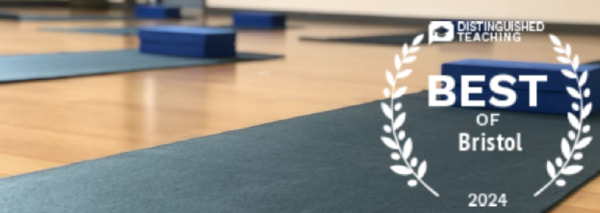
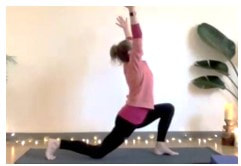

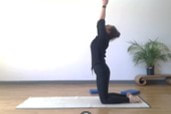
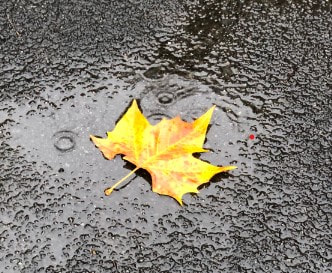
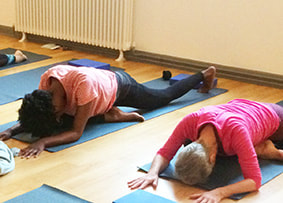
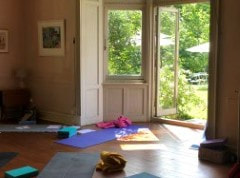
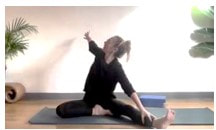

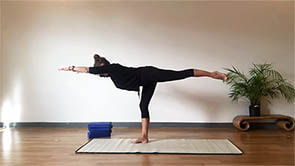
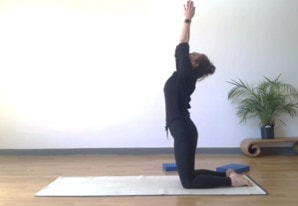


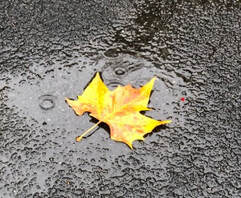
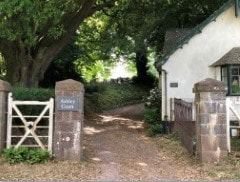
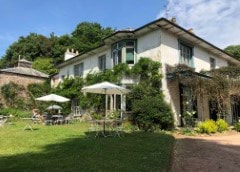
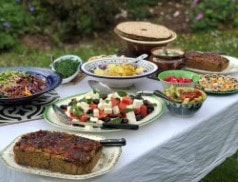
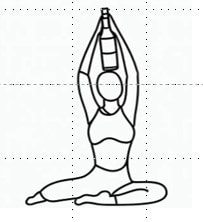




 RSS Feed
RSS Feed

